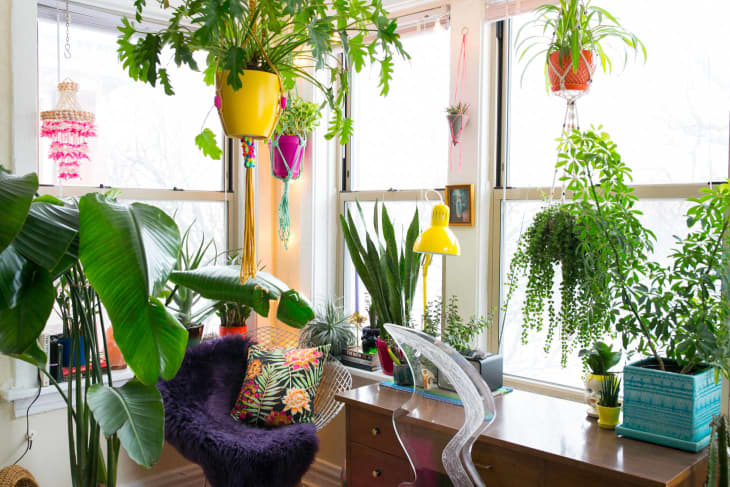The Renter Friendly Solution for Hanging Plants Without Putting Holes in the Ceiling

If you’re looking to turn your apartment into a tropical paradise but lack the space to do so, a clever solution would be to get hanging indoor plants. However, the downside here is that you’ll have to drill holes in the ceiling for the hooks—a decorating idea that might not be popular with your landlord.
Thankfully, there’s an alternative that won’t leave us… hanging (sorry, just had to).
The tension rod is a spring and screw system that uses, as the name implies, tension, to lodge itself between walls. It’s traditionally used for hanging curtains, clothes, and room dividers, but it also works for hanging plants.
IKEA Australia recently shared a photo by Instagram account @notanotherplant wherein two tension rods were installed vertically on either side of a bed, and a third pole placed horizontally between them. Hook up air plants such as Bird’s Nest fern, String of Pearls, and Burro’s Tail, among others, and the result is an inexpensive, damage-free way to elevate your plant game.
According to @notanotherplant, the tension rods are available on Amazon. “It was originally supposed to be an exposed wardrobe. I can’t remember the exact product but maybe try searching ‘Extendable poles or wardrobe’ on Amazon!” It looks like they used this freestanding closet system by ALLZONE (above), but if you use lightweight planters, a regular tension rod, which goes for around $18, could work as well.
Speaking of, before you put up your plants, remember to always check the tension rod’s weight limit and how much the dangling garden will weigh after watering to avoid any accidents.
For more genius uses for tension rods, check out how one writer organized her kitchen cabinets, plus 15 more ways they’re a lifesaver for renters.